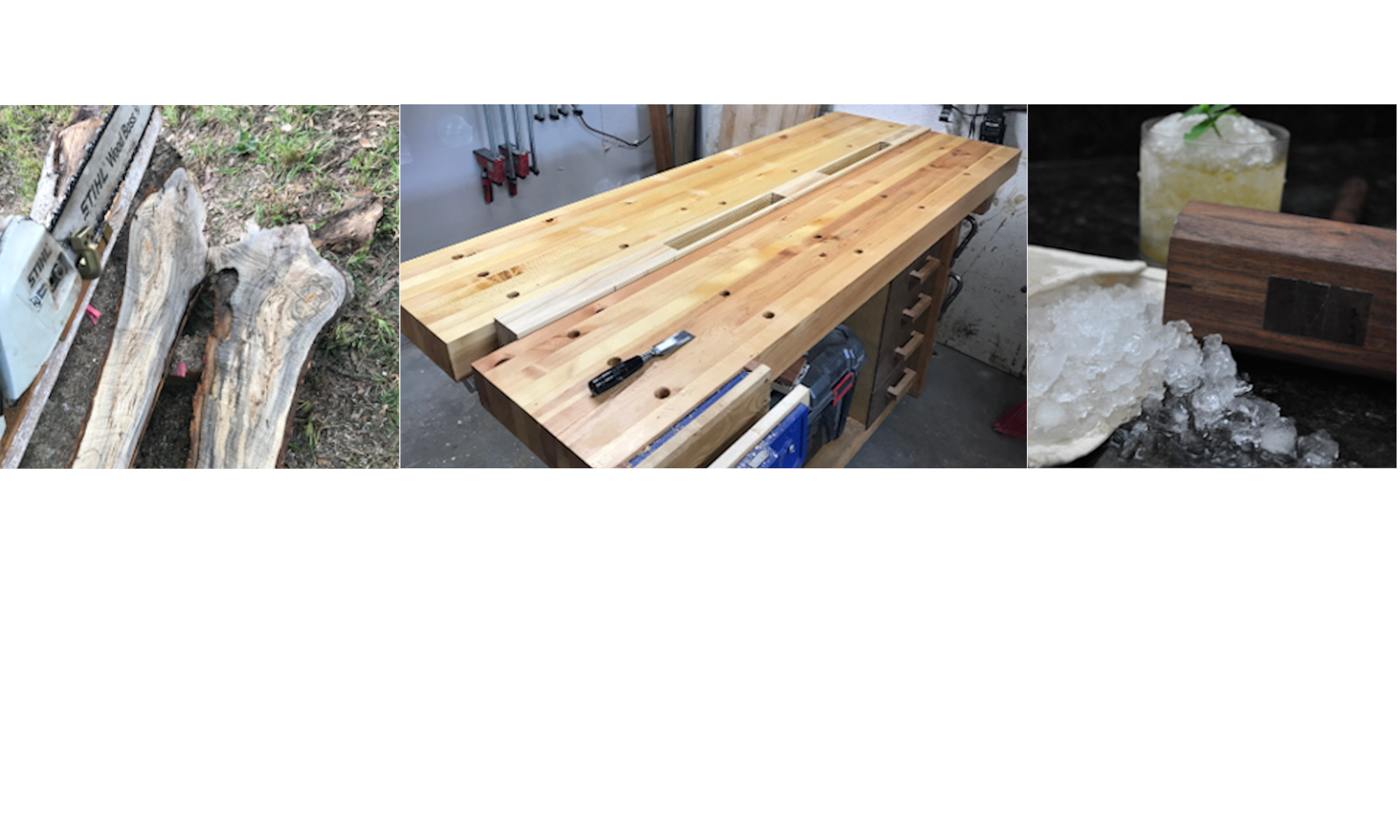Fairing the Hull and Veneers
The strip planking on the sport (contemporary) grandy is complete. It’s worth noting that the hull is extended 4 inches past the sheer (plywood was used to conserve cedar.) This piece of real estate will be used seal the vacuum bag when the time comes. Once the longitudinal cedar strips were installed the next step was fairing the hull. Initially edge tools are used, your favorite #7 plane will do nicely, working diagonally to take away and high spots. Then a long board, 3in x 12in (ish) board with 80 grit sandpaper is used to smooth out tooling marks. One must be methodical in removing material, we don’t want to go all the way to the low points as this could potentially make the hull thinner than desired. Once the appropriate level of fairness is achieved and the hull has been sanded as low as we dare, it’s time to fill the low spots. The product used is epoxy thickened with a filler that will be easy to sand. Once cured these high spots are sanded fair, this process is repeated a few times until the surface is acceptably fair.





Once the cedar strip layer is fair on the outside (we’ll need to do the same on the inside!) the first veneer layer is next. Our veneers are made from 1/16” Khaya, an African hardwood which has, in my opinion, an attractive grain similar to Sapele. The veneers are installed at a 30 – 45 degree angle and are trimmed to fit the hull shape. Working with a 1/16” material is nice as the trimming can be done with your favorite utility knife. The first layer is fitted in sections then attached with thickened epoxy and plastic staples. One must be cognizant of the staple length so they don’t poke through inside of the hull. The boat really looks cool with its first veneer layer attached.



Traditional Lapstrake Planking
Planking on the traditional Grandy may seem like it is going much slower. However once a cedar plank is installed it fairs itself and the hull is done (there are still frames that need to be added but we’ll save that for another newsletter). The first plank that is installed next to the keel and apron is the garboard. The garboard plank is important on a traditional boat as it helps to tie the frames and floors into the keel. As such, it can be subject to a higher level of force when compared to other planks on the same boat. The technique we used for capturing the shape of the garboard, and all other planks on this boat, is called spiling. Spiling is the process of projecting a shape in two planes to a pattern, then projecting that shape back to planking material. In our case that material is 3/8” western red cedar. When spiling you transfer the marks on the mold from the lining out process. Once the plank is cut, it typically has an unusual shape, and one must trust the spiling and not attempt to make any changes at the point. The plank is offered up to the boat and the hood end is “rolled” into place while a partner holds the aft end of the plank up high. If the fit looks close we can add gains. Gains are the joinery at the plank ends that brings them to a flat surface.




Once the gains are carved its time for the steam box, which is a box large enough to hold our plank and is full of a steady supply of steam. General recommendation when steaming is the material is in the box 1 hour per inch of thickness. After 30 minutes the plank is pulled and clamped to the boat. Once the plank cools the gains and overall fit is confirmed and the plank is fastened into place. This process more or less is repeated for every subsequent plank. Difference being the garboard is screwed into the apron along its length the subsequent planks are riveted the previous plank. Riveting in the context to boat building is a multi person process. A bronze nail is installed into the 2 planks with a rove on the inside. The nail is then cut to length and peaned over the rove, creating a tight joint.








Susie Cat is Launched
Susie Cat is a traditionally built catboat that was commissioned by the private individuals for the school to build. The hull was completed by last year’s class and the job of finishing her fell to the school’s Prothero interns. She is 13’6″ catboat planked in western red cedar with steam bent oak frames. I was fortunate to be there for her launching and have the opportunity to go for a short sail in the Port Townsend Bay.





